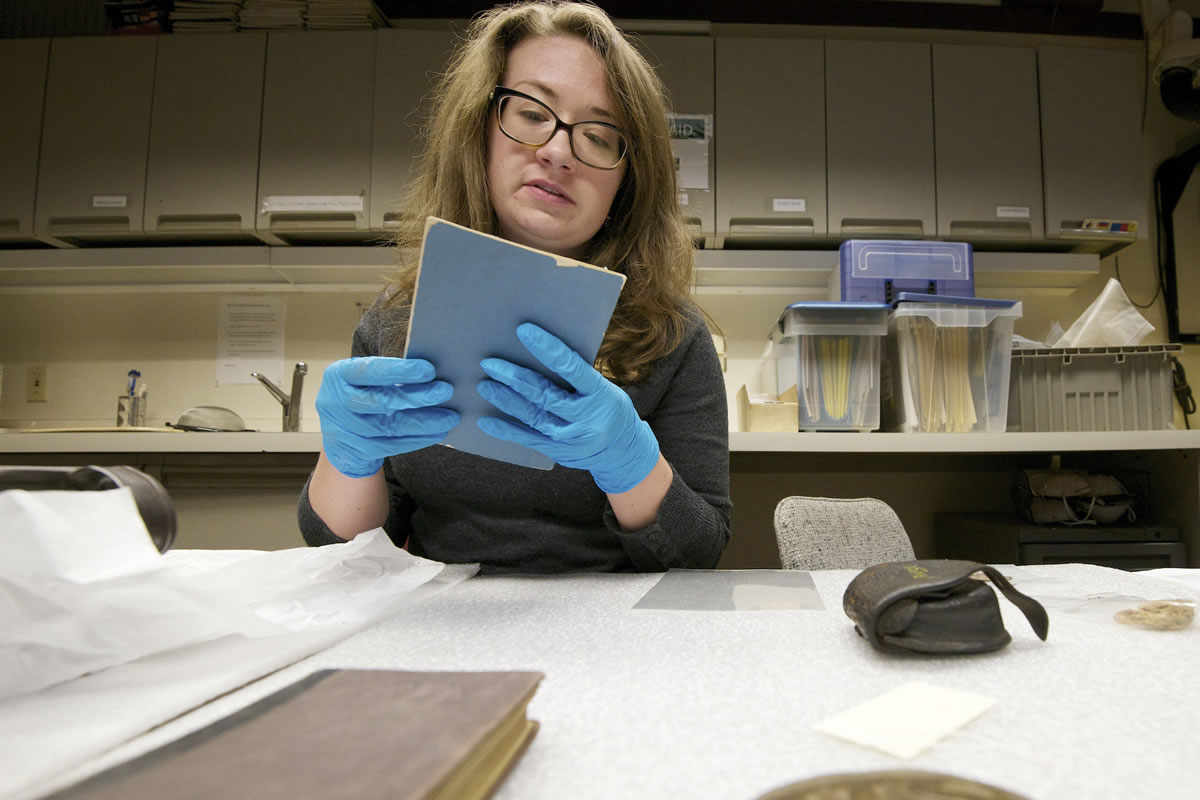What: A New Birth of Freedom: Vancouver Barracks During the Civil War.”
When: Runs through March 30.
Where: Fort Vancouver National Historic Site visitors center, 1501 E. Evergreen Blvd.
The three-day Battle of Gettysburg in July 1863 was a pivotal event in the Civil War. Less than five months later, its battlefield fatalities — including a general who’d served at Fort Vancouver — were the focus of another historical milestone when Abraham Lincoln delivered his Gettysburg Address on Nov. 19.
The 150th anniversary of that speech is being observed in Vancouver’s historic core, where some soldiers who fought at Gettysburg spent parts of their Army careers.
Union Gen. John Reynolds, who died on the first day of the battle on July 1, 1863, served at Fort Vancouver earlier in his career; so did Confederate Gen. George Pickett, whose name is linked with the battle’s most famous charge.
Two Union generals at Gettysburg, O.O Howard and John Gibbon, both commanded Vancouver’s Army post after the war.
The anniversary observance will be a chance to highlight many Northwest aspects of the Civil War, including Lincoln’s influence on this state.
Items on loan
Fort Vancouver National Historic Site’s exhibit — “A New Birth of Freedom: Vancouver Barracks During the Civil War” — is on display at the Visitors Center, 1501 E. Evergreen Blvd., at the east end of Officers Row.
The exhibit is presented in partnership with Clark College, which offered a Mature Learning course Tuesday on the Gettysburg Address.
The exhibit features artifacts from Fort Vancouver’s collection and 10 items on loan from Gettysburg National Military Park.
One of the Gettysburg artifacts is a pocket-sized Army manual that belonged to Leander Gage King, the 31-year-old captain of C Company, 16th Massachusetts Infantry. Measuring about 51/2 inches by 31/2 inches, the 250-page book includes rifle-drill instructions, diagrams of battle formations and sheet music for bugle calls. King was killed July 2, 1863, the second day of battle.
The Gettysburg artifacts “are very similar to things in our collection, but there is a power in the place they came from,” said Meagan Huff, a National Park Service museum technician at Fort Vancouver.
Another item is an unfired 12-pound projectile for a mountain howitzer. According to the curator’s notes, it was used as a lamp by a Gettysburg family for many years after the battle.
A pouch worn on a soldier’s belt yielded another artifact, and it wasn’t a percussion cap. Nor was it a musket ball … but it had almost the same shelf life.
“We’re pretty sure it’s a piece of hardtack,” Huff said.
The 150-year-old biscuit and other items were loaned by Greg Goodell, curator at Gettysburg National Military Park.
The Gettysburg collection includes 50,000 Civil War objects, Goodell said. Some pieces can be linked to specific soldiers.
More than battlefields
While names like Gettysburg, Shiloh and Bull Run still can stir emotions, “The history of the Civil War is much more than the eastern battlefields,” said Theresa Langford, curator at Fort Vancouver. The war affected every corner of the nation, in different ways, she said.
When the war started, Fort Vancouver (it became Vancouver Barracks in 1879) was the Army’s primary post in the Pacific Northwest. Units of volunteers took over after the Army’s regular troops were ordered to Civil War postings.
The volunteers mapped new territory, guarded roads and built forts. Vancouver also was home to the Vancouver Arsenal, an important military installation. A secret society of Confederate sympathizers, the Knights of the Golden Circle, reportedly plotted to seize it.
Lincoln influenced development of the Northwest through several pieces of legislation. Without opposition from Southerners, who left to form the Confederate Congress, the president passed several transformative bills.
The transcontinental railroad tied the West Coast to the rest of the nation. The Homestead Act encouraged westward migration. And land-grant legislation led to what now is Washington State University … and its campus at WSU Vancouver.




